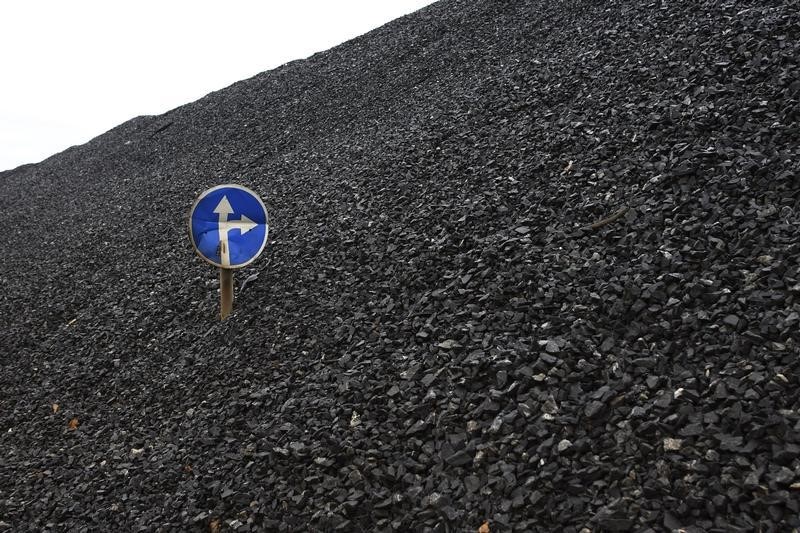* North Asia's temperatures are expected to fall by mid-January
* LNG and coal imports to rise in Japan, China and South Korea
* High power consumption to result in lingering China smog
By Henning Gloystein and Mark Tay
SINGAPORE, Jan 6 (Reuters) - Winter temperatures in North Asia will swing to unusually cold from relatively mild in the coming weeks, lifting the demand for liquefied natural gas (LNG) and thermal coal as regional power stations ramp up to meet the increased heating needs.
January tends to be the coldest month of the year in the northern hemisphere, and a drop to colder-than-usual temperatures during the peak winter heating demand season is likely to tighten markets and support already high prices for coal and LNG.
Analyst forecasts and utility order books show rising LNG and coal purchases to meet the electric heating demand in North Asia's biggest energy consumers of China, Japan and South Korea and their economic hubs.
"If the coming 45 days are colder than normal in other years, there will definitely be an uptick in energy demand. Many people in Japan and South Korea use city gas for heating in their homes," said Boseok Jin, an energy analyst with IHS Markit based in Tokyo.
Temperatures in Tokyo, Seoul and Beijing, with a combined population of roughly 60 million people, may drop to 2 degrees to 3 degrees Celsius below normal for mid-January, from current levels of 3 degrees to 5 degrees above normal, Thomson Reuters Eikon data shows. The unusually cold weather should persist over the next 45 days in Seoul and Beijing.
The temperature swing should raise power and fuel consumption and tighten North Asia coal and LNG markets, two utility traders said.
Eikon data shows that LNG consumption in Japan, the world's biggest importer of the fuel, will hit its highest in over a year this month, at 10.73 billion cubic metres (bcm), up from 9.7 bcm in December.
In China, the world's second-biggest LNG consumer, imports have set new records since last November and rose to at least 7.33 bcm in December, a trend that should persist. in South Korea, another top LNG consumer, is expected to rise from 5.03 bcm in December to 5.23 bcm in January, the highest level since January 2015, Eikon data shows.
SMOG TO LINGER
The cold weather should keep coal use elevated, especially in China, where it is the primary fuel for electricity generation.
A trader with a major commodity shipper said that order books for coal supplies to Asia were full for January, although he added that "by the time of the Chinese New Year in late January, we'll likely see a fall off in demand due to warmer weather and falling holiday consumption."
The Chinese New Year, also known as the Lunar New Year, is celebrated across Asia and will start on Jan. 28 this year, reducing industrial and commercial energy consumption.
Before that, the unseasonably cold weather will increase power and fuel usage and likely boost prices.
Thermal coal shipments to China stood between 12.7 million and 13.8 million tonnes in November and December, the highest level since at least January 2015, Eikon data shows. The utility traders said a similarly high figure was likely for January.
The high use of coal will contribute to ongoing smog North China, including Beijing, where people have been suffering from hazardous air for weeks. spot LNG prices LNG-AS were at $9.50 per million British thermal units on Dec. 30, their highest level since early 2015.
Asian benchmark Australian coal cargo prices GCLRCBPFBMc1 are at $83 per tonne they remain over two-thirds higher than this time last year.
<^^^^^^^^^^^^^^^^^^^^^^^^^^^^^^^^^^^^^^^^^^^^^^^^^^^^^^^^^^^ CHART-Asia weather outlook
http://tmsnrt.rs/2ii2QhC CHART-Japan LNG demand
http://tmsnrt.rs/2hYVxht CHART-China LNG demand
http://tmsnrt.rs/2ihUsz2 CHART-South Korea LNG demand
http://tmsnrt.rs/2ihUXJq
^^^^^^^^^^^^^^^^^^^^^^^^^^^^^^^^^^^^^^^^^^^^^^^^^^^^^^^^^^^>
